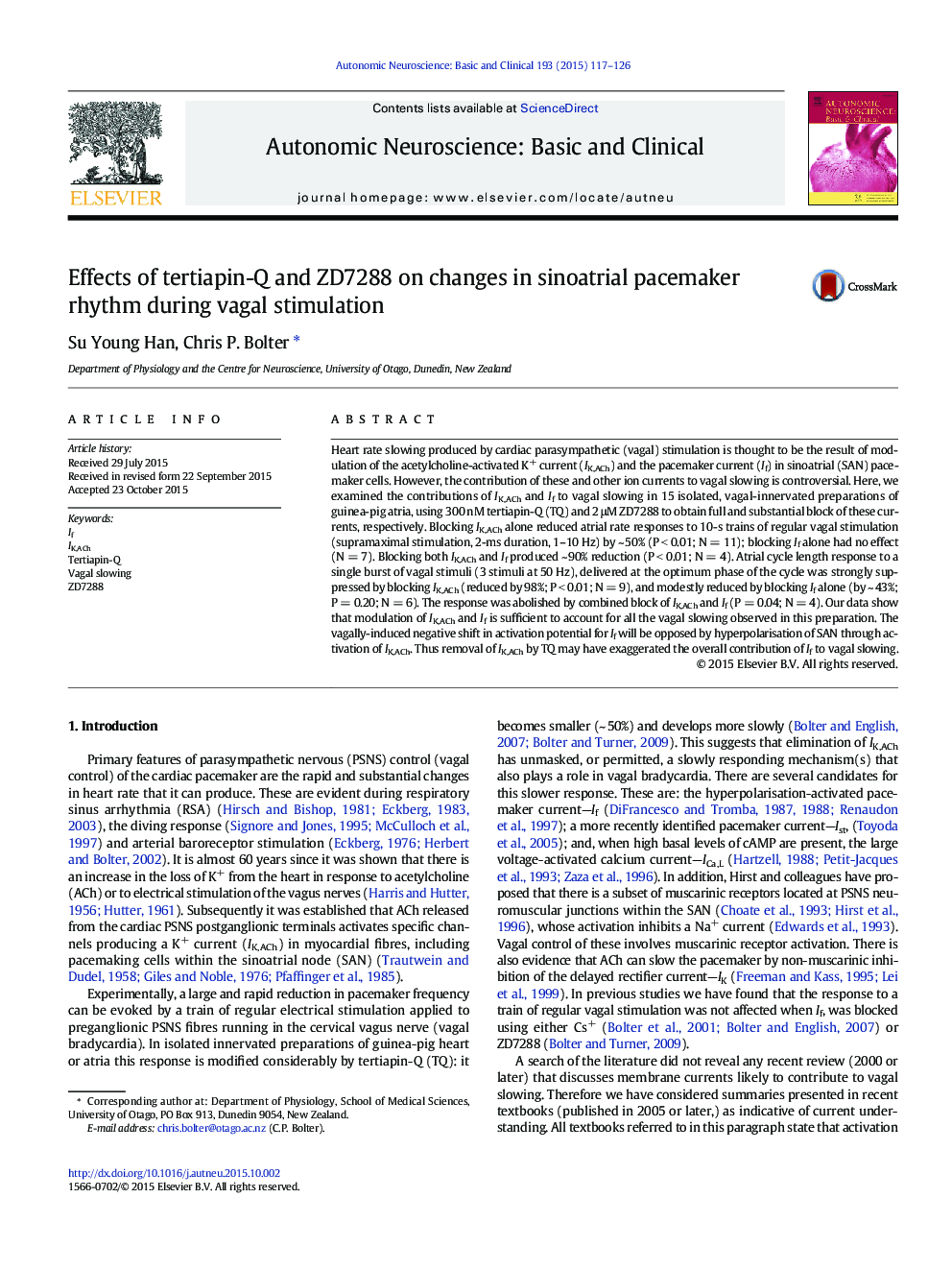| کد مقاله | کد نشریه | سال انتشار | مقاله انگلیسی | نسخه تمام متن |
|---|---|---|---|---|
| 6003924 | 1579522 | 2015 | 10 صفحه PDF | دانلود رایگان |

- We examined vagal slowing in isolated vagal-innervated guinea-pig atria.
- 10-s trains and brief bursts of vagal stimulation were used to produce vagal slowing.
- 300 nM tertiapin-Q and 2 μM ZD7288 were used to block IK,ACh and If.
- Activation of IK,ACh accounted for the rapid and greater part of vagal slowing.
- Inhibition of If can account the remaining vagal slowing.
Heart rate slowing produced by cardiac parasympathetic (vagal) stimulation is thought to be the result of modulation of the acetylcholine-activated K+ current (IK,ACh) and the pacemaker current (If) in sinoatrial (SAN) pacemaker cells. However, the contribution of these and other ion currents to vagal slowing is controversial. Here, we examined the contributions of IK,ACh and If to vagal slowing in 15 isolated, vagal-innervated preparations of guinea-pig atria, using 300 nM tertiapin-Q (TQ) and 2 μM ZD7288 to obtain full and substantial block of these currents, respectively. Blocking IK,ACh alone reduced atrial rate responses to 10-s trains of regular vagal stimulation (supramaximal stimulation, 2-ms duration, 1-10 Hz) by ~ 50% (P < 0.01; N = 11); blocking If alone had no effect (N = 7). Blocking both IK,ACh and If produced ~ 90% reduction (P < 0.01; N = 4). Atrial cycle length response to a single burst of vagal stimuli (3 stimuli at 50 Hz), delivered at the optimum phase of the cycle was strongly suppressed by blocking IK,ACh (reduced by 98%; P < 0.01; N = 9), and modestly reduced by blocking If alone (by ~ 43%; P = 0.20; N = 6). The response was abolished by combined block of IK,ACh and If (P = 0.04; N = 4). Our data show that modulation of IK,ACh and If is sufficient to account for all the vagal slowing observed in this preparation. The vagally-induced negative shift in activation potential for If will be opposed by hyperpolarisation of SAN through activation of IK,ACh. Thus removal of IK,ACh by TQ may have exaggerated the overall contribution of If to vagal slowing.
Journal: Autonomic Neuroscience - Volume 193, December 2015, Pages 117-126